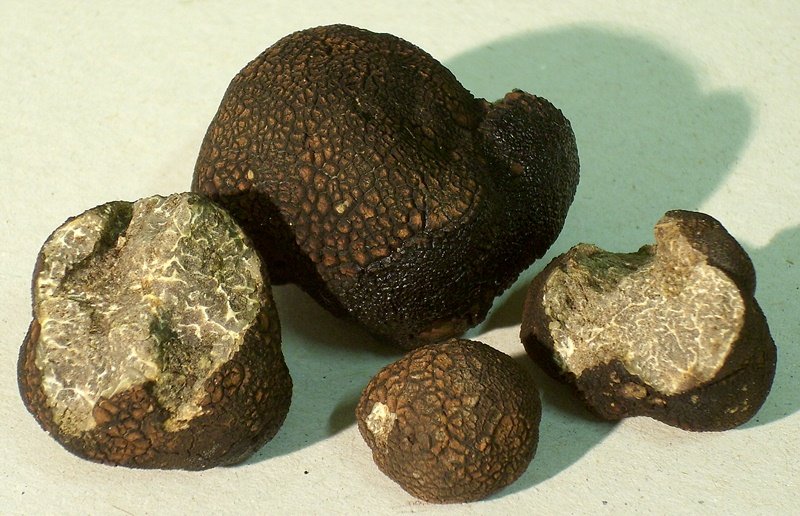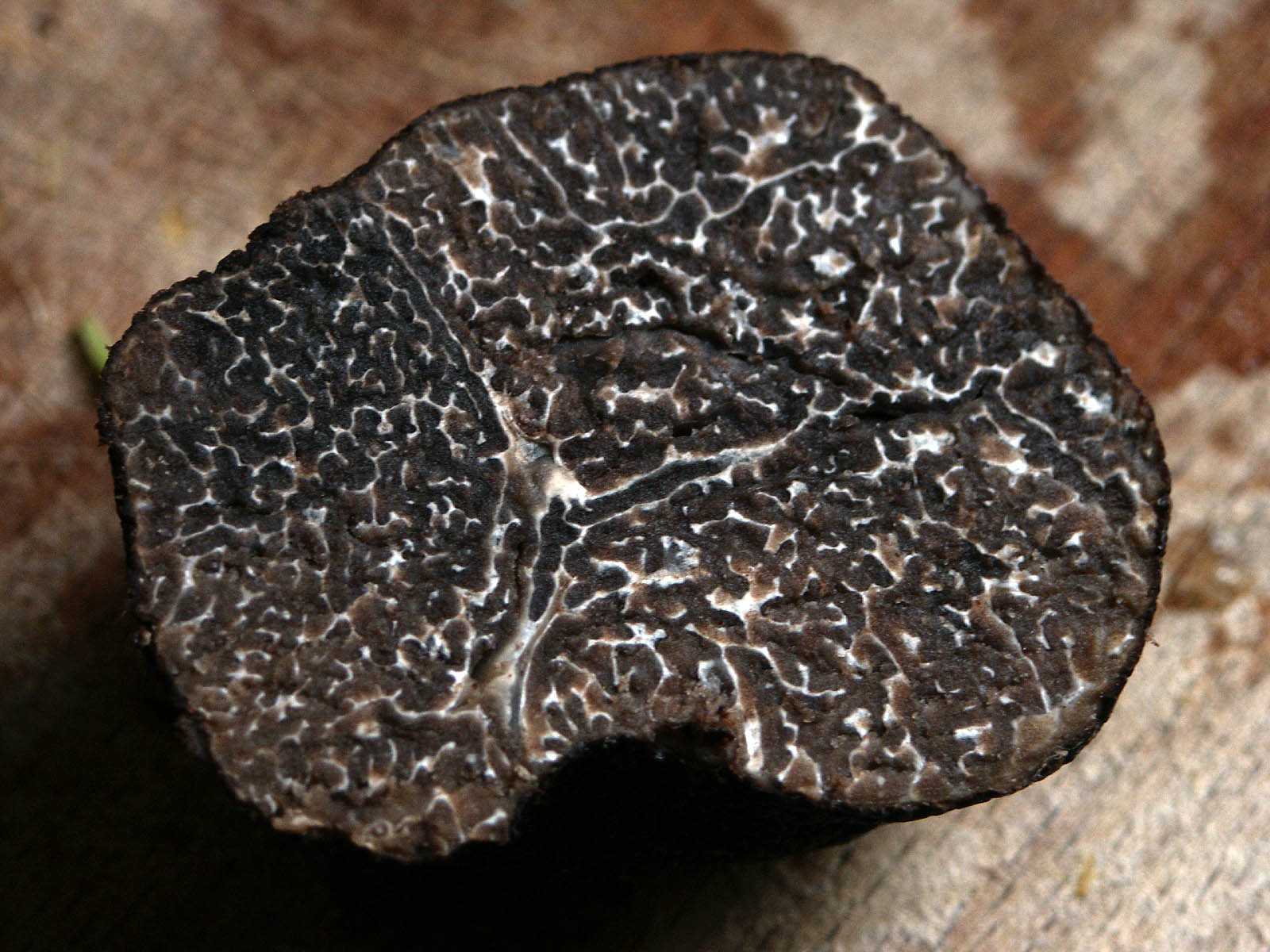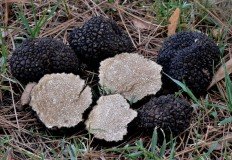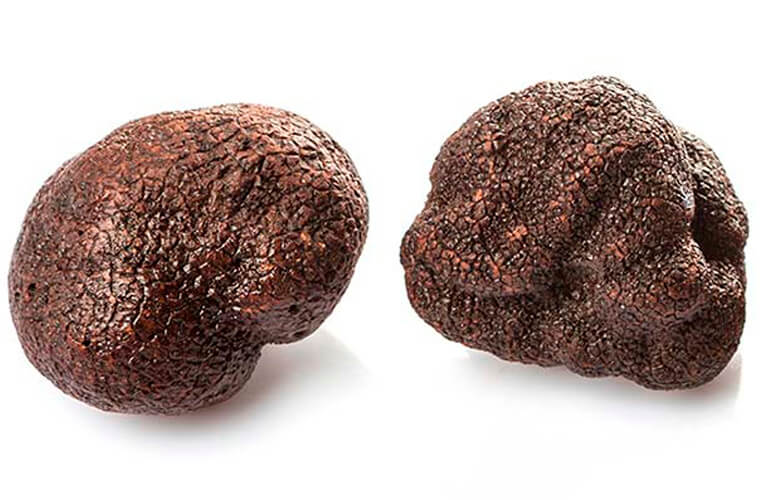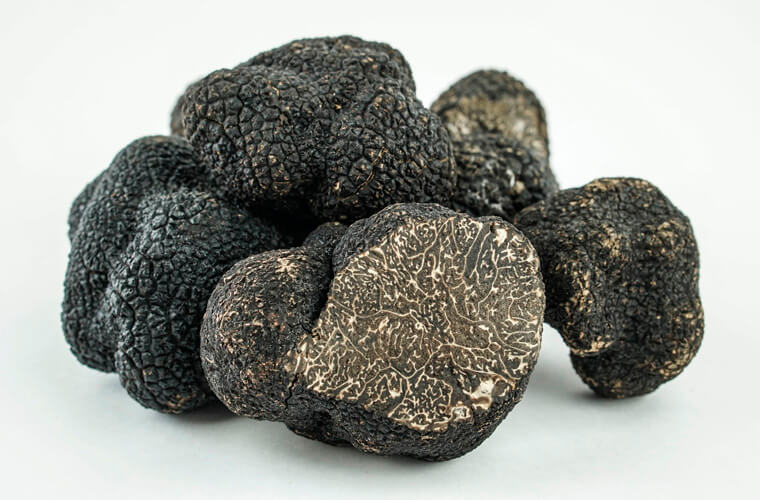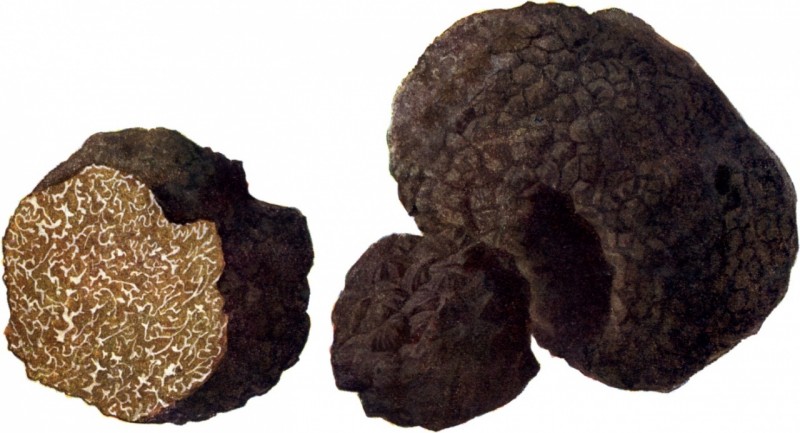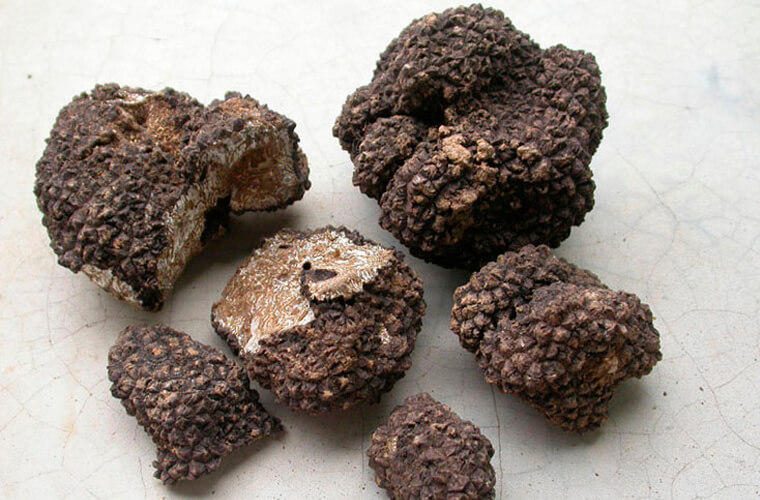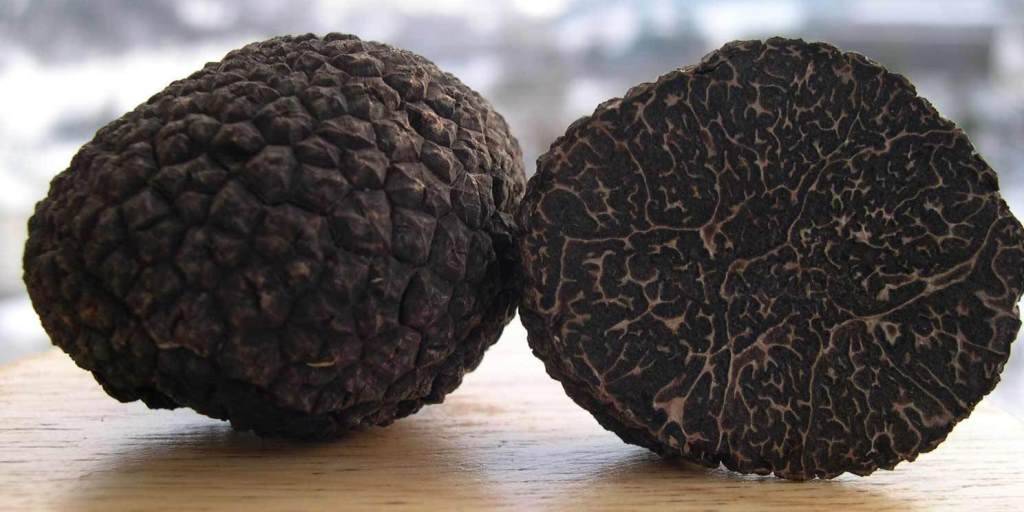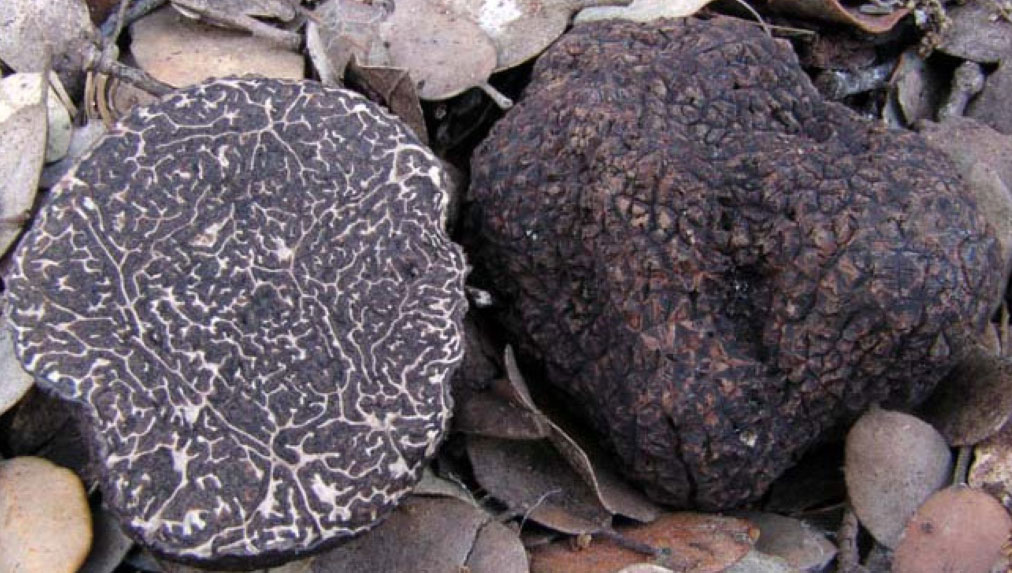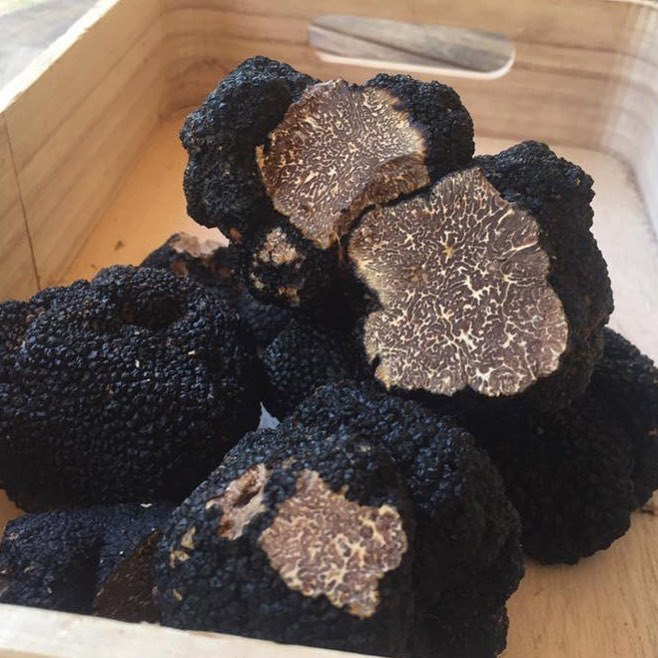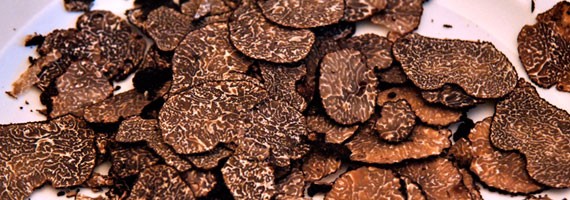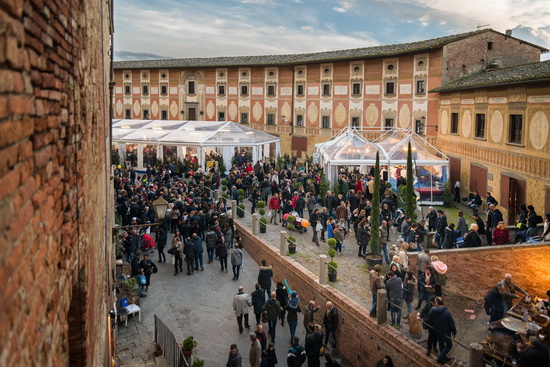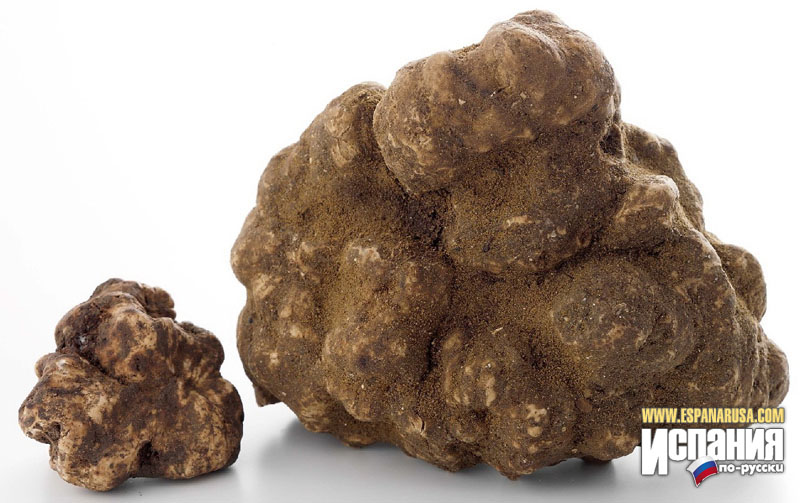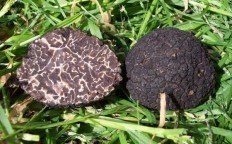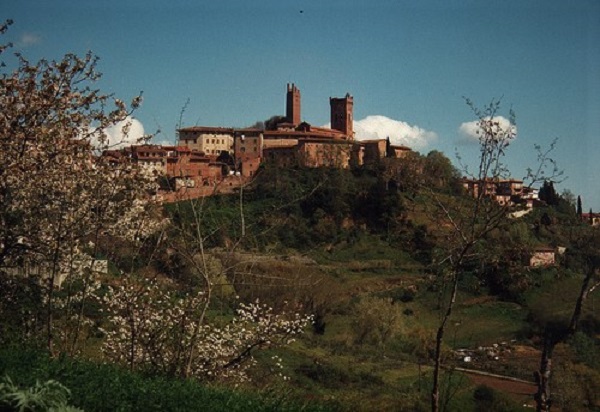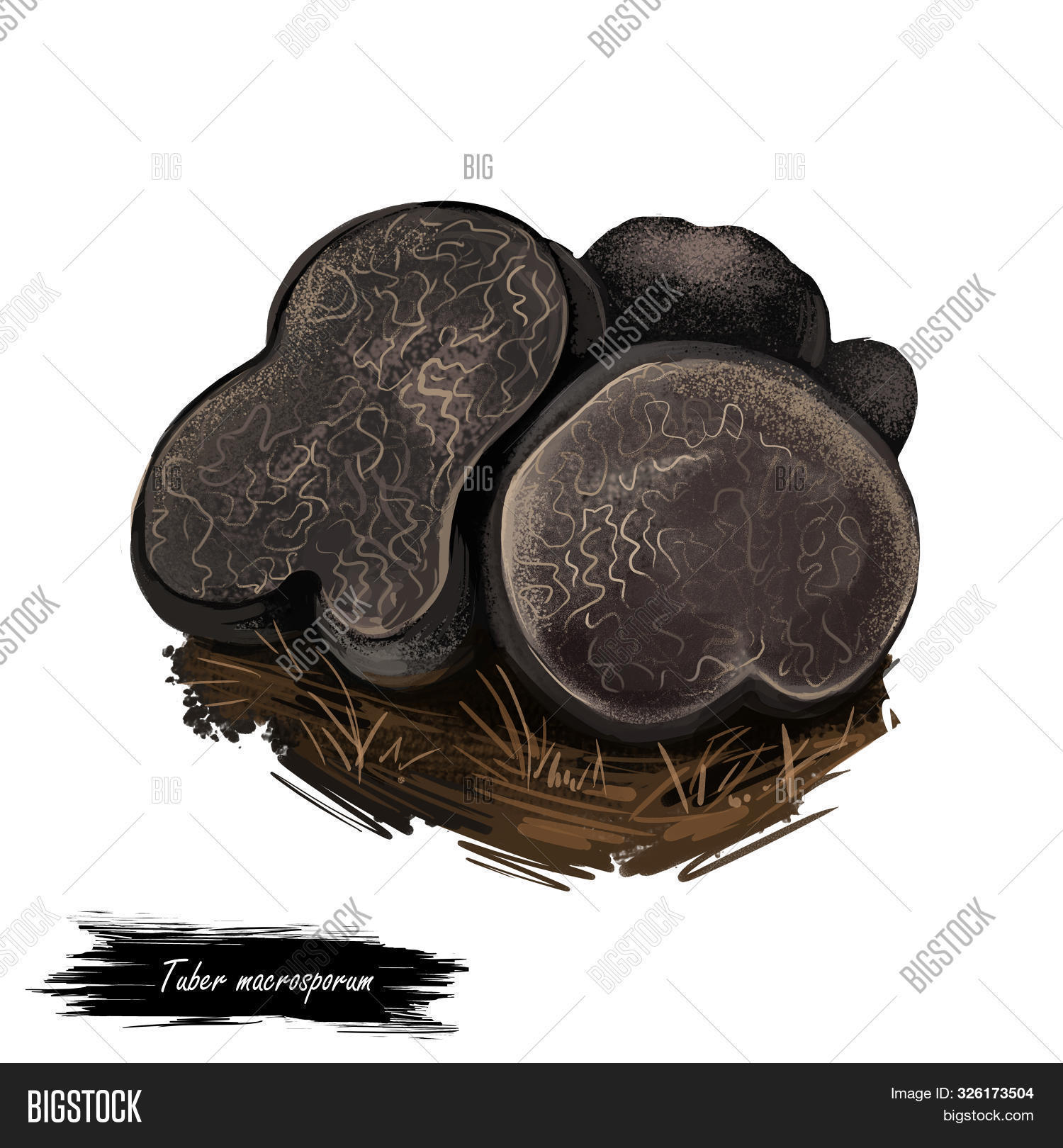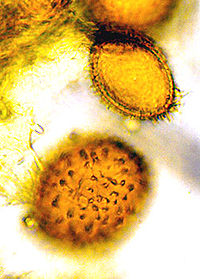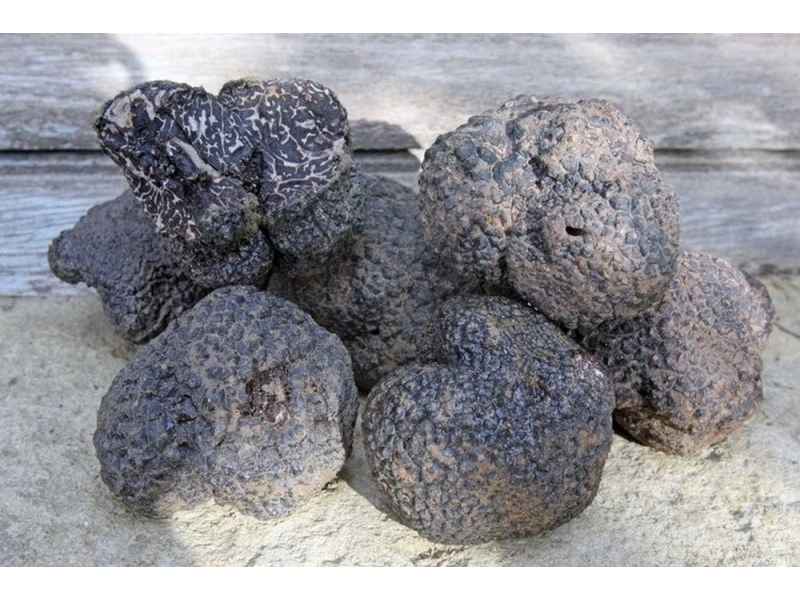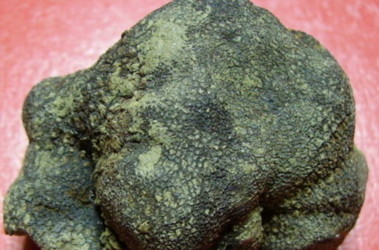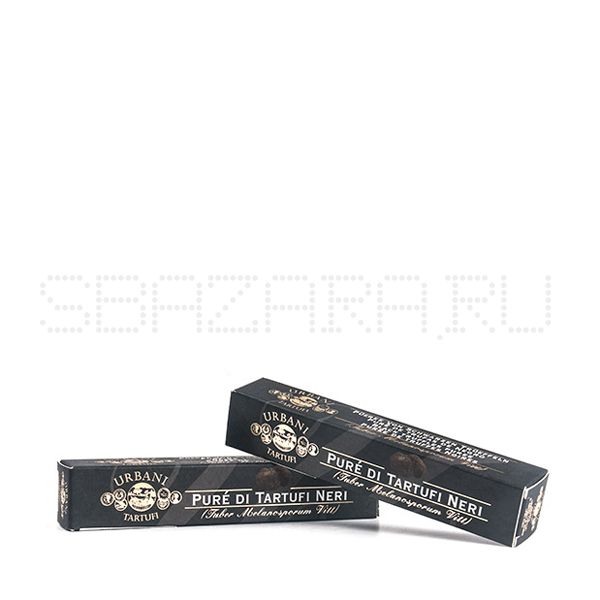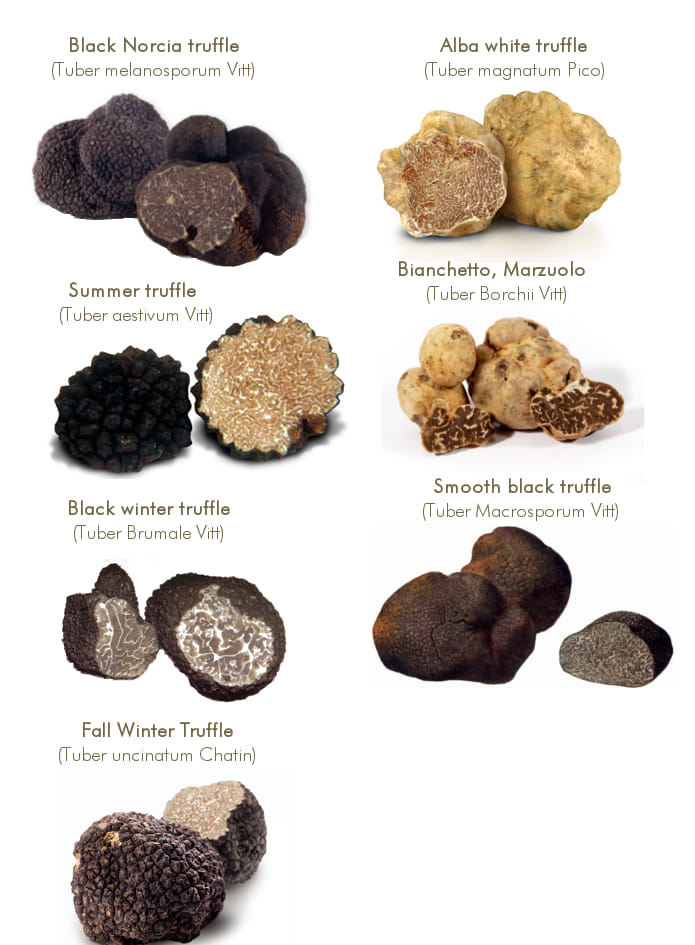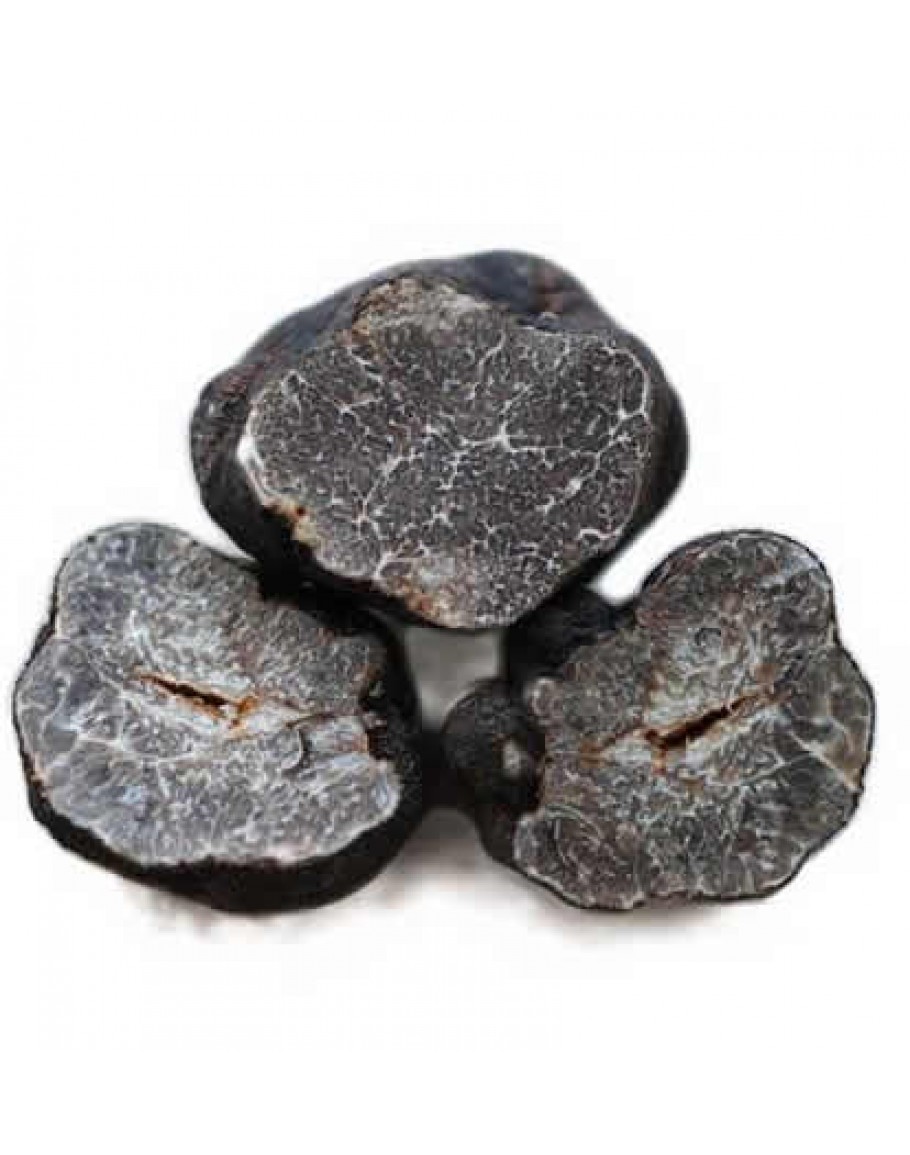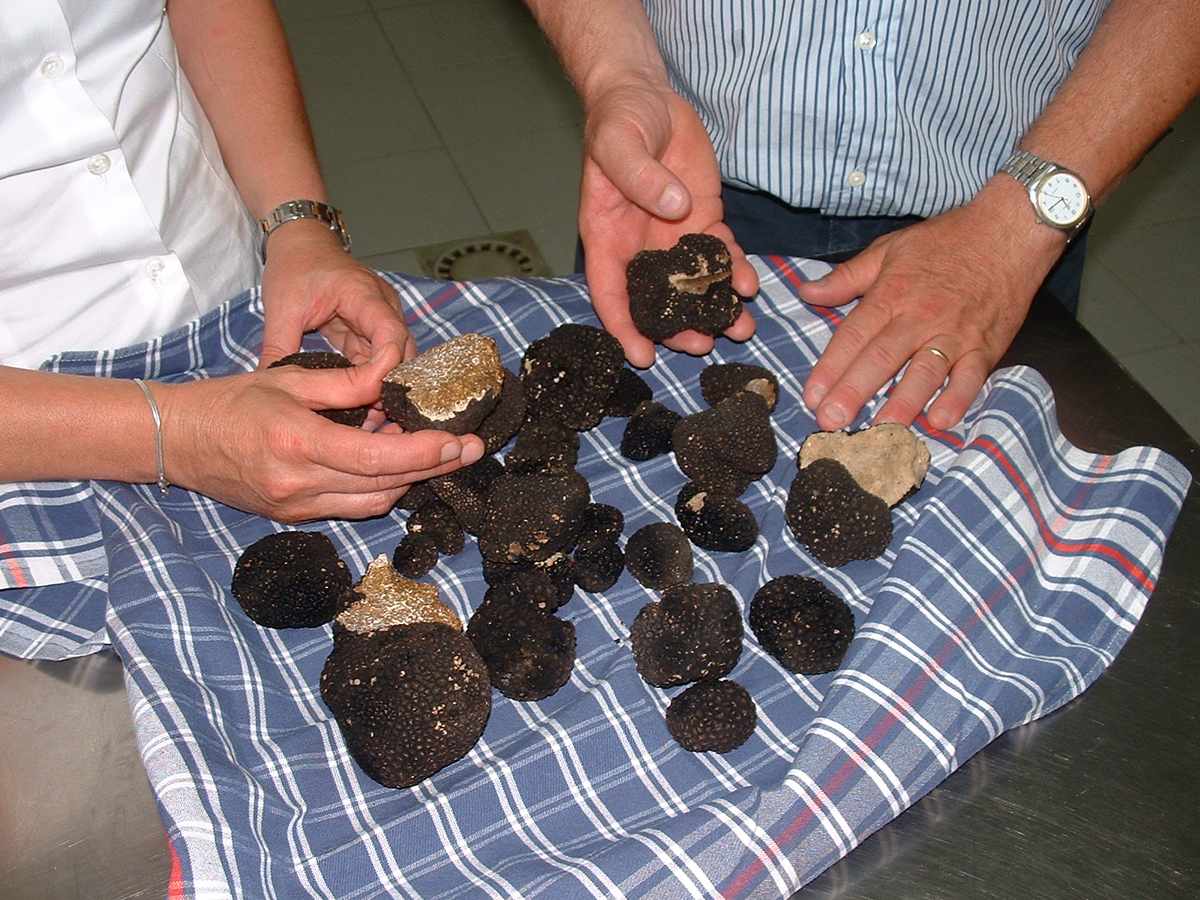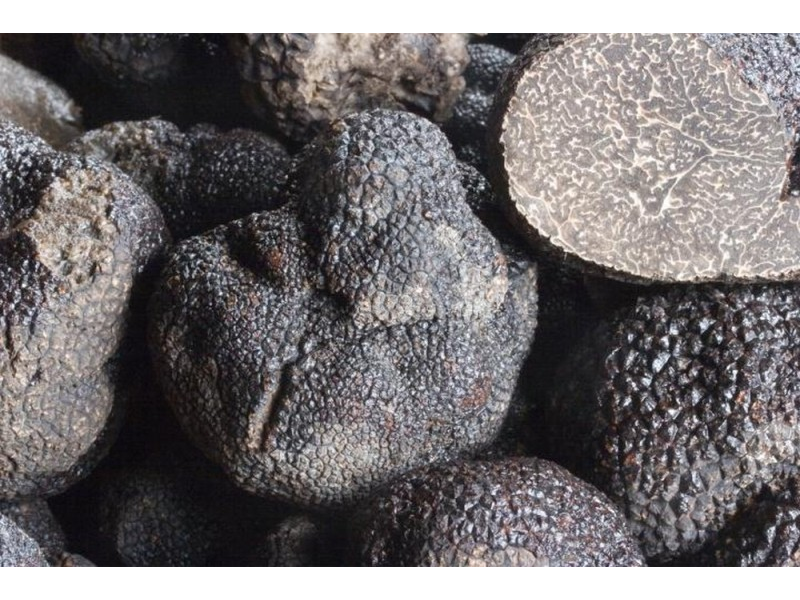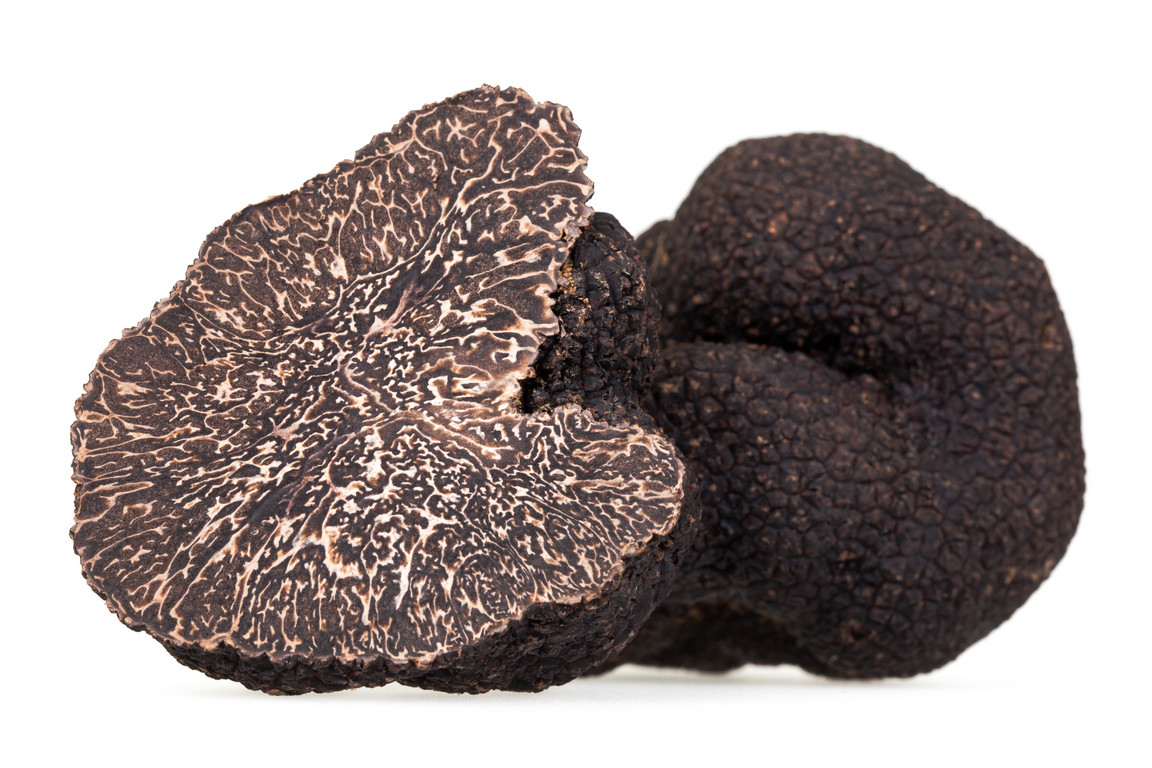Growing features
To grow a species at home, you need to purchase seedlings of certain types of tree species and infect them with mycelium. The following tree species are suitable for growing the species:
- stone oak;
- English oak;
- common hazel.
For your information. Seedlings are very young plants that have just emerged from seeds.
After inoculation (infection), the seedlings are placed in a greenhouse, in which strict quarantine must be observed. The trees should be planted after 12 months, when the seedlings have reached 25 cm in height.
A soil with a high calcium and humus content is suitable for planting. You also need to remember about its acidity. Only a certain level of it will allow you to get the harvest of this mushroom. Ideally, pH = 7.5-7.9. Best grown in dry climates. The average ambient temperature in summer should not exceed + 25 ° С. Planting is carried out in the spring, after the end of frost and the onset of stable warm weather. The landing pattern is 5x4 m. The landing depth should be at least 75 cm.
The harvest in the first years will be small - 3-4 kg per hectare. Over time, the number of mushrooms will increase. 5 years after planting, with proper care, up to 20 kg of truffles are harvested.
Truffles: what the money for?
Search for black truffles near Gelendzhik, www.grib.tv
Russian truffle - search with mycologist Vishnevsky, www.grib.tv
Description
Summer truffle (Tuber aestivum) is an edible marsupial mushroom, ascomycete, which belongs to the Truffle family, the Truffle genus. Its other names:
- summer or summer black;
- Saint-Jean;
- scorzone;
- edible;
- burgundy.
Summer truffle is the only representative of the genus on the territory of the Russian Federation.

- the fruit body is uneven, tuberous, rather large, from 2.5 to 10 cm in diameter. The surface is lumpy, with large pyramidal warts. The color is brown-black or black;
- the flesh of young representatives of the species is dense, as they grow older it becomes looser. Its color is initially yellowish or grayish, then yellowish-brown; white veins are clearly visible on the cut, creating a marble pattern. The flesh tastes sweet, with a nutty flavor, a pleasant and rich smell, reminiscent of the aroma of algae, forest floor;
- spores in shape resemble a spindle or oval, yellow-brown.
What is truffle
Truffles belong to the genus of marsupials, which have underground tuberous fleshy fruit bodies. Their unsightly appearance does not match their excellent taste and aroma. Having tasted the delicacy, you will remember it for a lifetime. It smells like an autumn forest: fallen leaves, earth, wet trees. Fresh truffles have a very strong aroma. Even if cooking isn't your hobby, truffle-making is easy.
The mushroom is located underground between the roots of beech, hornbeam, oak, birch, poplar, elm, linden, mountain ash, hawthorn and other trees. While developing, it pulls out all vital elements from the roots, while not causing any harm to the tree. Truffles love deciduous, mixed forests, earth with lime. Ripening time - from late summer to late autumn. The standard size of mushrooms is 10-15 cm, their weight is up to 500 g. Plants are found in the Volga region, Moscow, Oryol, Vladimir, Samara, Leningrad regions, in the Caucasus and the shores of the Black Sea.
What does a mushroom truffle look like?
Fruit bodies are round, tuberous, have a fleshy, cartilaginous consistency. In terms of size, it ranges from hazelnut to potato tuber. Outside, the fruit bodies have a leathery layer - peridium. It can be smooth, cracked, or covered with large polyhedral warts. If the fruiting body is cut, the pattern of the fabric will resemble marble.The shiny truffle has alternating light and dark veins inside: light ones are called "internal veins", dark ones - "external veins".

Mushroom truffle - what does it look like and where does it grow?
Truffle is a rare delicacy mushroom that grows underground. On the market, 1 kg of such mushrooms costs from 2 to 5 thousand euros, some specimens were sold at a higher price. The high cost is determined by the complexity of obtaining the mushroom and high demand. High demand due to its extraordinary taste, which will be appreciated even by a strict critic.
Mushrooms grow in hard-to-reach places, 10-15 cm underground under the roots of trees, which complicates their search. The location of the mushrooms depends on the composition of the soil and climate. You need to look for them in the roots of poplar, linden, rowan, oak, beech, birch, from this we can conclude that the mushroom chooses mixed and deciduous forests.
What is a mushroom
Truffle is a parasite fungus, it develops on the roots of trees and draws useful microelements from them, it does no harm. Another difficulty in finding mushrooms is that there are different types of truffles and each type ripens at a certain time, for example: white in autumn, black in winter.
Truffles grow in Europe, North America, Asia and the USA. In Russia, truffles are found in places where a warm climate prevails, sometimes they can be found in the European part, mainly where the soil is saturated with lime.
Basically, truffles are divided into 2 types: these are black and white types.
- Black truffle. It begins to ripen in the summer and bears fruit by the fall. Fresh fruit is red-purple in color, sweat. The core is white. They grow under the roots of oak, hornbeam, beech, sometimes near pines and birches.
- White truffle. Ripens from autumn to early winter. The fruits are yellowish in color, the flesh itself is white. It is less common than black truffle, therefore it is more appreciated.
Where does the mushroom grow?
The geography of the truffle habitat in Russia is quite extensive, it is found in the Central regions, in the Volga region, in the Caucasus.
European part
In deciduous and mixed forests in the Caucasus, on the Black Sea coast, in the Moscow, Voronezh, Podolsk, Tver, Leningrad regions, you can find a black truffle. White tubers are found in the Tula, Oryol, Vladimir, Smolensk, Kuibyshev regions.
Siberia
Deciduous and coniferous forests of Siberia are the habitat of the delicious white truffle, and favorable climatic conditions contribute to their good harvest.
Crimea and Caucasus
Mild climatic conditions and planting of oak and beech groves increases the yield of mushrooms and promotes their active growth. Gelendzhik, Anapa, the village of Abrau-Dyurso, Alania are the regions that account for the largest amount of the harvest.
Due to the complexity of mushroom picking, there is a whole set of rules, thanks to which the picking efficiency can be increased many times over.
The most important thing is to choose the right forest. These should be areas with deciduous trees (beech, birch, oak)
The soil should contain a large amount of lime and sand. In the mushroom place there will be high humidity, the vegetation is stunted, the earth is gray-ashy, and midges will circle over the place. If the plantings are very young, then you won't be able to find mushrooms there, but you can often see traces of wild boars and other animals around.
You should pay attention to the bumps under the trees and look for places where the roots are large. The main condition for finding mushrooms is the availability of trained assistants.
It can be a dog or a trained pig. Animals can smell the delicacy up to 25 meters away. As soon as the beast starts digging the ground, you need to immediately stop it before it ate or spoiled the mushroom. All truffle places can be memorized and returned there, while it is advisable to search everything nearby, because there is a chance to find a new habitat for this wonderful mushroom.
Mushroom characteristics
Summer truffle (Tuber aestivum - Latin) is an edible mushroom belonging to the department of ascomycetes (marsupials), the truffle family, and the truffle genus. Other variety names:
- Black Russian;
- Burgundy;
- Summer black;
- Scorzone;
- Saint-Jean.
Summer truffle is rarely found in nature, therefore it is listed in the Red Book of Russia, as well as in the regional Red Data Books of the Voronezh region, Krasnodar Territory, the republics of Adygea and North Ossetia - Alania. The fungus belongs to the category “Near Threatened” and needs control over the population and protection of its growing areas.
Delicacy truffles are considered the most expensive in the world. Prices start at € 500-600 per kilogram of farmed black truffles. The cost of specimens that appeared in the wild is even higher. In Moscow restaurants, they are served at $ 5 per gram of delicacy.
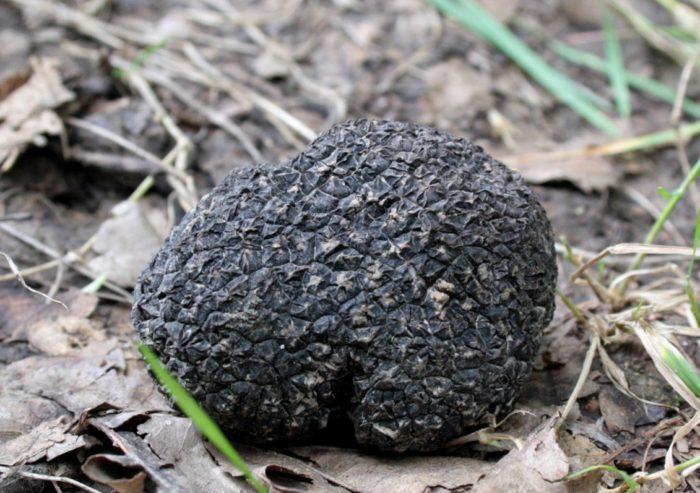
Pig and Flies

Truffle mushroom - a fragrant earthy treasure
Truffles contain incredibly fragrant compounds called attractants. In the Burgundy, Indian, Trinity, Perigord truffle there are about two dozen volatile steroid compounds, with their own smell, even from underground, driving various animals and insects crazy. People have long noticed this feature, starting to search for these mushrooms with the help of animals. The most classic option is hunting with a pig. This lop-eared creature is able to smell a truffle underground at a distance of up to 20 meters, and instantly dig it to the surface with its snout. The main skill of the search engine, with this method of hunting, is to have time to drag the pig away before it ate the truffle itself. Nowadays, you can easily buy purchased truffles, but the traditions of pork hunting in Europe are still alive today. Also, specially trained dogs are used to search for these mushrooms.
In France, the "fly method" of finding truffles has long been invented. A special type of fly always lays its eggs in the vicinity of this mushroom. The hatched larvae occupy the nearest fruit body and eat it, and when they themselves turn into flies, then, for some time, they swarm over their nest with a characteristic column, so that the place of occurrence of the mushrooms can be easily found. Naturally, a fly will hopelessly spoil one fruiting body, but truffles grow in groups, so such a loss, for a searcher, is quite acceptable.
In Russia, truffles were harvested in Novorossia, Crimea, the Middle Volga region, on the territory of the modern Samara region, in the Baltic states, and on an industrial scale, mushrooms were harvested in various regions of the Moscow region, where, at one time, they were used to search for specially trained bears.
False doubles
Experiments to create a clone of a black truffle are now widespread in France. Perhaps, after its successful completion, the price of truffles will go down. In the meantime, unscrupulous tartufayos can slip a fake instead of a real "black diamond". Or an inexperienced mushroom picker will mistake a true black truffle for a false one, which can look very similar to an edible one.
To protect your life and health, we suggest that you familiarize yourself with the data in the table:
| Mushroom name | Appearance, features | Risks after use |
False truffle |
Oblong tuber, length up to 10 cm, dark red surface. Has an unpleasant odor. | Intoxication. Death is possible. |
Deer truffle |
Brown, red-brown, brown tuber covered with a thick bumpy crust. It resembles a walnut. | Stomach upset. For animals it is not dangerous and edible. |
Inedible tombolans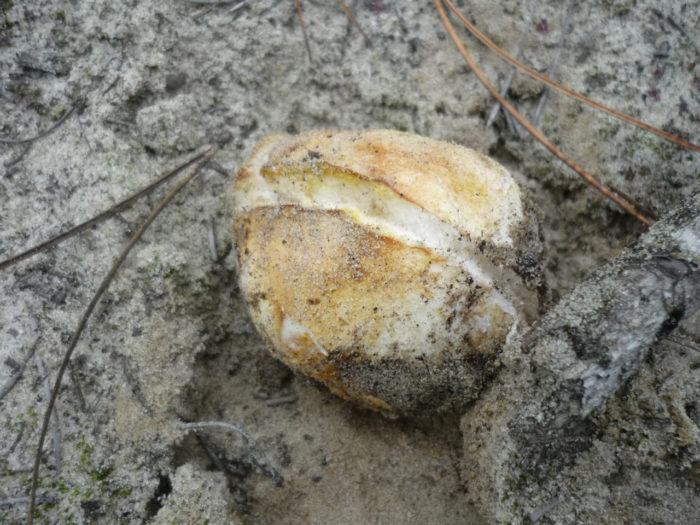 |
The tuber-shaped fruiting body comes to the surface. The leg is missing. The range of colors is varied. | Upset gastrointestinal tract. Intoxication of the body. |
Before going on a truffle hunt, carefully study the counterparts of a true gourmet mushroom. Better - by photo or video.
Black truffle (Tuber melanosporum)
Other names:
- Truffle black french
- Perigord truffle (derived from the historical region of Perigord in France)
- Truffle real black French
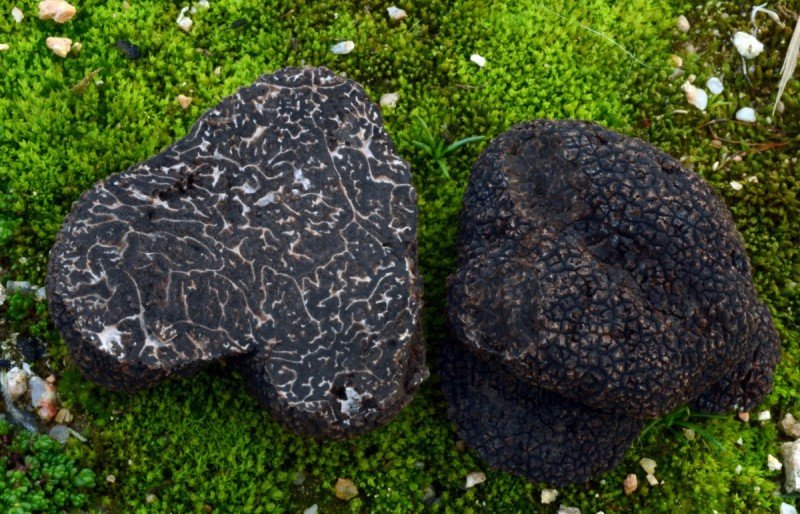
Black truffle (lat.Tuber melanosporum or Tuber nigrum) is a mushroom of the Truffle genus (Latin Tuber) of the Truffle family (Latin Tuberaceae).
There are about thirty varieties of truffles, only eight of which are interesting for culinary purposes. The most exquisite is the Perigord black truffle Tuber melanosporum. Despite the direct indication of the place of residence in the name, this species is common not only in Perigord, but also in the southeastern part of France, as well as Italy and Spain. For a long time, it was believed that truffles are nothing more than growths on the roots of trees, but in fact they are mushrooms of the marsupial class, which have two characteristic features. Firstly, the truffle grows underground at a depth of 5-30 centimeters, which makes it difficult to find. And secondly, this mushroom can live only in scarce calcareous soil and exclusively in alliance with trees, and in choosing a "life partner" the truffle is extremely finicky and prefers to cooperate mainly with oak and hazel. The plant provides the mushroom with the necessary nutrients, and the mycelium literally envelops the roots of the tree and thereby improves their ability to absorb mineral salts and water, and also protects against various diseases. In this case, all other vegetation around the tree dies, a so-called "witch circle" is formed, which indicates that the territory belongs to mushrooms.
Nobody saw how they grow. Even those who collect them from generation to generation. Because the whole life of a truffle passes underground and is completely dependent on trees or shrubs, the roots of which become the real breadwinners of these mushrooms, sharing with them the reserves of carbohydrates. True, it would be unfair to call truffles freeloaders. The web of fungal mycelium filaments, enveloping the roots of the host plant, helps it to obtain additional moisture and, in addition, protects against all kinds of microbial diseases, for example, phytophthora.
Black truffle is a dark, almost black tuber; his meat is at first light, then darkens (to a purple-black color with white veins).
The fruit body is underground, tuberous, round or irregular in shape, 3-9 cm in diameter. The surface is reddish-brown, later to a coal-black color; when pressed, it turns into a rusty color. Covered with numerous small irregularities with 4-6 edges.
The pulp is firm, light at first, gray or pinkish-brown with a white or reddish marble pattern on the cut, darkens with age from spores and becomes from dark brown to black-violet, the veins in it are preserved. Has very strong characteristic aroma and a pleasant taste with a bitter tinge.
Spore powder dark brown, spores 35 × 25 microns, fusiform or oval, curved.
Mycorrhizal forming agent with oak, less often with other deciduous trees. It grows in deciduous forests with calcareous soil at a depth of several centimeters to half a meter. Most common in France, central Italy and Spain. In France, finds of black truffles are known in all regions, but the main places of growth are in the south-west of the country (departments of Dordogne, Lot, Gironde), another place of growth is in the south-east department of Vaucluse.
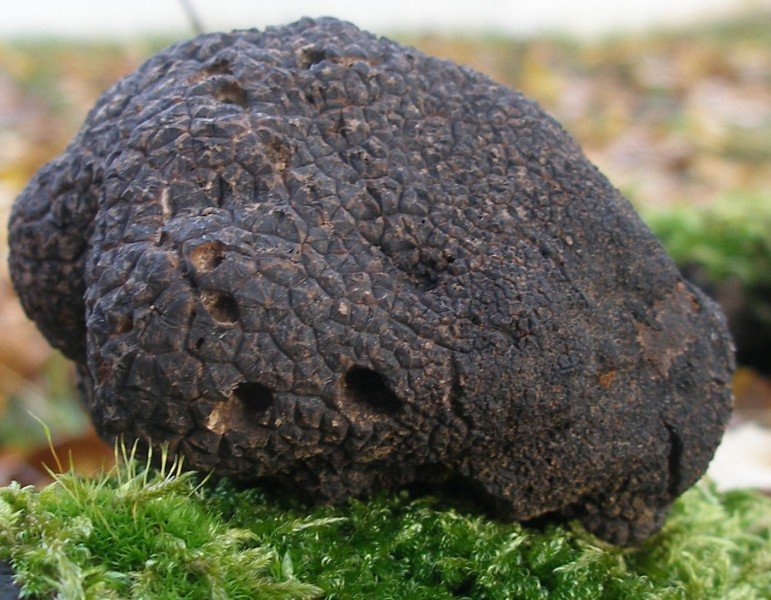
Cultivated in the PRC.
The strong smell of black truffle attracts wild pigs to dig up fruiting bodies and spread spores. In truffles, red fly larvae develop, adult insects often swarm above the ground, this can be used to search for fruit chalk.
Season: early December to March 15th, usually harvested in the first months of the year.
Black truffles are traditionally harvested with the help of trained pigs, but since these animals destroy forest soil, dogs have also been trained for this purpose.
For gourmets, the strong aroma of these mushrooms is of primary value. Some note the forest dampness and a slight trace of alcohol in the smell of black truffles, others - a shade of chocolate.
Black truffles are easier to find - their mycelium destroys most of the vegetation around. Therefore, it is easier to find the place where black truffles grow based on the totality of signs.
External description and general characteristics of the mushroom
Outwardly, a truffle looks more like a potato, it grows in about the same way - underground and searching for it is a whole business industry in many countries, which has very high earnings, in which specially trained dogs and pigs even participate. But we will talk about this in more detail in the following articles.

White and black truffle uncut diamonds of the mushroom kingdom
Features of appearance depend on the region of origin, but if we take the average parameters, then they are as follows -
Appearance:
- Similar to a potato in shape, but more rounded
- The fertile body has a bag
- The diameter can be up to 13 cm, but the average value is similar to the size of a walnut
- The mass depends on the size and is also comparable to that of a potato. Can reach 1 kilogram
- Embossed (veiny, wavy) skin
It is precisely this structure of the body that allows it not to crumble into dust during and after its ripening.
The ripening season in Russia of such a variety as the Black Summer (Russian truffle) falls mainly in the summer. White truffles ripen from mid-autumn to early winter. But there is also a species called Black Winter, its period of maturity is from January to March.
In different countries, the truffle matures in different seasons. Truffle growers have made it possible to cultivate them all year round. The main cultivation and exporting country is China. With the right conditions for growth and proper crop care, this can be done almost anywhere in the world.
The most iconic
There are many types of truffles, and below are the most significant or important ones for the Russian mushroom picker.
Truffle Summer or Black Russian Tuber Aestivum

Truffle Summer or Black Russian Tuber Aestivum
The most interesting for the Russian mushroom picker, since this is the only kind of real truffle that grows in our homeland.
Appearance
Fruit bodies up to 10 cm in diameter., Bluish - black or brownish - black shade. Their surface is covered with characteristic brown-black pyramidal warts.
The pulp, in youth, is dense, yellowish-white or slightly grayish, in mature fruit bodies it is brownish-yellow with numerous light veins and looser. The pulp has a very pleasant smell and delicate sweetish - nutty taste.
Where and when Grows
Grows in deciduous and mixed forests, most often on calcareous soils. Forms mycorrhiza with hornbeam, beech and oak, sometimes with birches and pines. Fruiting at a depth of 3 to 15 cm, sometimes even deeper. Old fruiting bodies sometimes protrude above the ground.
Occurs in different regions of Russia from late July to late November. Most often and confidently, this species bears fruit in the forest-steppe zone of the Crimea and on the Black Sea coast of the Caucasus.
Truffle Italian or Piedmont Tuber Magnatum

Truffle Italian or Piedmont Tuber Magnatum
It is also called Real White. One of the most delicious and connoisseurs' favorite truffle, named after the Piedmont region of Northern Italy.
Appearance
Fruit bodies look like tubers of irregular shape, brownish or light ocher, up to 12 cm in diameter and weighing up to 300 grams. There are known cases of finding specimens up to a kilogram in weight. From above, the fruiting bodies are covered with a velvety skin.
The pulp is dense, light, sometimes with a slightly reddish tint and creamy brown marble pattern. The pulp tastes good and smells like garlic cheese.
Where and When It Grows
It grows from early summer to early winter on loose calcareous soil in deciduous forests. Forms mycorrhiza with oak, poplar and willow and linden. Distributed in northern Italy, southern and central Italy and southern Europe.
In Europe, this species is one of the main delicacies.They eat it raw, grated on a special grater or cut into slices, as a component of salads, as a seasoning for sauces and other various dishes.
Distribution and collection

Black truffle grows almost exclusively in the warm zone of central Europe, mainly in the central, southern and southwestern regions of France, and is also found in Italy and Spain.
The rarity of the truffle is due, among other things, to the fact that it is very picky about the soil. Exceptionally poor calcareous soils, on which hazel or oak grow, are suitable for its growth. It is with these trees that the black truffle most often forms a root symbiosis.
It is almost impossible to find a truffle by chance, since this mushroom leads an exclusively underground lifestyle. The depth of its growth reaches 50 cm.
One of the signs by which you can find black truffles is the almost complete absence of vegetation in its neighborhood, with the exception of the tree with which the mushroom is in symbiosis.
As a rule, specially trained animals with a strong sense of smell, such as pigs or dogs, are used to search for black truffles. The collection of these mushrooms is also complicated by the fact that black truffles grow exclusively in single specimens.




